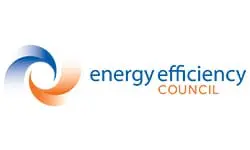In 2025, Australian households and businesses grapple with unpredictable price hikes and grid constraints. This volatility disrupts planning, inflates operating costs, and exposes businesses to risk. As a result, more Australians are turning to solar and Battery Energy Storage Systems (BESS) to take control of their energy future.
Adopting a solar system offers financial relief and long-term stability for businesses, in particular. Whether you run a small warehouse or manage energy-intensive operations, commercial solar solutions can significantly cut electricity bills, reduce carbon emissions, and improve energy security.
What’s Causing Australia’s Energy Volatility?
Energy volatility refers to rapid and unpredictable fluctuations in electricity prices. In Australia, several converging factors have worsened this volatility:
-
- Unreliable fossil fuel plants: Many coal-fired stations are nearing retirement age and suffer frequent outages.
- High global gas prices: LNG supply constraints and global tensions keep wholesale electricity prices elevated.
- Extreme weather events: Heatwaves and bushfires place immense stress on the grid, driving demand and outages.
- Limited transmission capacity: Renewable generation is outpacing grid upgrades, causing supply bottlenecks.
The Australian Energy Regulator (AER) reported that average quarterly spot prices in Q1 2025 ranged from AUD $72/MWh to $112/MWh by region. In addition, prices fell in the northern regions compared to the previous quarter due to a reduction in the number of high-price events. They rose in the southern regions due to higher-than-average demand and an increase in the number of high-price events.
Businesses are especially vulnerable to these shifts. Manufacturing plants, cold storage facilities, and commercial offices rely on predictable energy costs. Without stable electricity prices, profit margins shrink, and planning becomes nearly impossible.
Why Solar Is a Smart Response to Price Spikes
Installing commercial solar panels allows businesses to generate electricity onsite and shield themselves from volatile retail energy rates. Once installed, solar panels for commercial buildings provide low-cost power for decades. The average system pays for itself in 3 to 5 years and continues delivering savings long afterwards.
In 2025, the average cost of a commercial solar installation has dropped to around $0.95 per watt. With solar feed-in tariffs still available in most states and Small-scale Technology Certificates (STCs) lowering upfront costs, the return on investment is better than ever.
Depending on load profiles and system size, business energy consumers using commercial solar solutions can offset 60% to 80% of their daytime consumption. The match is ideal for solar panels for businesses operating during daylight hours, such as retail or logistics.
How BESS Systems Empower Businesses
Adding a Battery Energy Storage System transforms a solar system for business into a complete energy management solution. BESS stores excess solar energy during the day and discharges it during peak demand periods when grid electricity is most expensive.
With time-of-use rates now widespread, battery storage can dramatically reduce a business’s peak demand charges. This process, known as peak shaving, improves power cost predictability and flattens the load curve. BESS also allows businesses to participate in Frequency Control Ancillary Services (FCAS), where they can earn revenue by supporting grid stability.
According to SunWiz’s 2025 Australian Battery Market Report, over 300,000 households and businesses now have solar-plus-storage systems, marking a 33% year-on-year increase. Battery prices have also fallen by 12%, making BESS more accessible to small and medium enterprises.
Batteries provide backup power in blackout-prone areas, allowing essential operations to continue without disruption.
Trends Accelerating Adoption of Solar and BESS
Several powerful market forces are pushing solar and battery adoption in 2025:
-
- Electrification of Transport and Equipment: Businesses are adopting electric fleets, forklifts, and HVAC systems, increasing their power needs.
- Net-zero commitments: Corporate ESG strategies now prioritise commercial solar panels to reduce emissions and increase sustainability credentials.
- Virtual Power Plants (VPPs): VPP participation allows businesses to join energy-sharing networks. When connected, they can sell excess stored energy during grid stress events.
- Power Purchase Agreements (PPAs): For businesses hesitant to pay upfront, a PPA enables access to solar power with no capital investment. A third party installs and maintains the system while the business buys energy at a lower rate.
Why Businesses Should Act Now
Delaying investment in solar or battery storage can mean missed savings and continued exposure to energy uncertainty. With incentives still available and battery and solar technology now mature, 2025 presents a unique window of opportunity.
Investing now helps your business:
-
- Lock in lower electricity costs for the long-term
- Increase property value and energy resilience
- Gain independence from volatile retail pricing
- Reduce carbon footprint and align with client ESG requirements
As retail energy rates rise, businesses that rely on the grid will continue to face budget pressure. In contrast, those who adopt commercial solar solutions and integrate battery storage can maintain stability and profitability.
Take Control of Your Energy Future with Kuga Energy
Energy volatility continues to challenge Australian businesses, but it also creates opportunities. By installing solar panels for commercial buildings and adding a battery storage system, you can control your power supply, improve your bottom line, and future-proof your operations.
Kuga Energy specialises in commercial solar installation, integrated battery storage, and end-to-end commercial solar solutions. Whether you’re a small business or a large enterprise, we tailor every solar system for business use with precision and performance in mind. For more information, book a free consultation today!
Frequently Asked Questions (FAQs)
To know more about solar and BESS systems, here are answers to common questions:
What factors are driving energy volatility in Australia in 2025?
Unreliable coal plants, high global gas prices, extreme weather, and limited grid capacity are causing unpredictable electricity price spikes. As a result, commercial spot prices have ranged from AUD $72/MWh to $112/MWh, depending on the region, impacting business operations and budgets.
How do solar and battery systems help businesses manage energy costs?
Commercial solar panels generate low-cost power on-site, offsetting 60%–80% of daytime electricity use. Adding a Battery Energy Storage System (BESS) allows peak shaving, stabilising energy costs and enabling participation in programs like FCAS for added revenue.














 Get Quote
Get Quote Call Now
Call Now